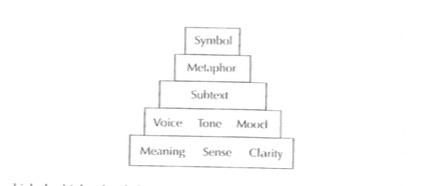Breaking the Explaining Habit
Can years of explaining complex concepts translate into good creative writing?
An Exclusive Writing Lab on the importance of meaning, sense, and clarity in writing while dissecting a writer’s work while also providing valuable insights and encouragement
Welcome and we are taking the Open Mic of a few weeks earlier and getting to work:
Q: What is your biggest challenge/frustration right now in your creative process?
A: Doug S, Portland, OR, writes: Busting out of nasty habits, particularly considering readers dumb and needing everything explained clearly. This may come from years of explaining complex tax code in lay terms. Another frustration is discouragement.
We like to think that when we write, we are on a bridge walking side by side with our readers. We like to believe they will “get” what we are writing about because it’s so obvious to us, and our story is full of adventure and drama. We can see what we are writing in our own head, too. The memories are vivid. The feelings clear.
This early writing is fun and wonderful because we can’t seem to stop filling pages. We think, “Wow! I’m a writer. This is terrific stuff!”
Emboldened, we decide to share this work with someone; a beloved wife or a dear friend. We read out loud or pass them a few of our brilliant pages.
This is when the writer gets his first reality check because soon, terribly soon, a look of confusion will knit into the brow of the listener, or they might glance toward the clock or start fidgeting.
This is when we get a sinking feeling that we’ve been kidding ourselves and that it’s not going as well as we hoped.
Welcome to creative writing.
My favorite teaching on this comes from an essay in the above collection. The above graphic points to the primary job of a writer who intends (hopes) to reach a reader. The writer must mean what he says, the writing must make sense, and it must be clear.
Meaning: At the literal level, the writer’s words must mean what they say. The author, having chosen them, must stand fully and firmly behind them. Obese, fat, chubby, heavy, and stout, for instance, have different meanings. They are not interchangeable.
Sense: The boy ate the watermelon makes sense. The watermelon ate the boy does not, unless the author has made a special world in which it does…The writer must recognize the continuous and unrelenting pressure from the reader that the text makes sense.
Clarity: Strunk and White tell us not to use ten words where five will do. This is because the most compact language statement is almost always clearer than an expansive one…The reader expects the writer to have removed all excess language, to have distilled things to their essences, whether the style is simple or complex.
~ From The Writer’s Workshop by Frank Conroy
Conroy tells us that failing to ring the meaning, sense and clarity bells, again and again, is equivalent to missing the bullseye. The more times you mess up in any of these three categories, the price is your reader’s attention.
This is the truth of the bridge analogy. You and your reader stand at opposites sides of the bridge and, walking toward each other, meet some where in the middle, or what Conroy calls “in the zone.”
As a writer, you will put far more energy into your writing to create that zone than the reader will take ingesting the words, but that’s what you’re signing up for and why it’s so damn hard.
Now, let’s go to Doug’s prompt write from last month and see how this lesson shows us how meaning, sense and clarity works:
If you are not a paid subscriber, become one to get in on this inspiring teaching that will take your creative work to the next level.
Keep reading with a 7-day free trial
Subscribe to Blackbird's Flight School with Jennifer Lauck to keep reading this post and get 7 days of free access to the full post archives.








